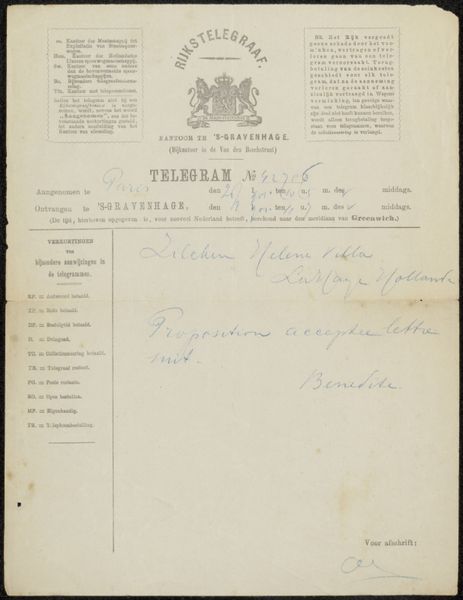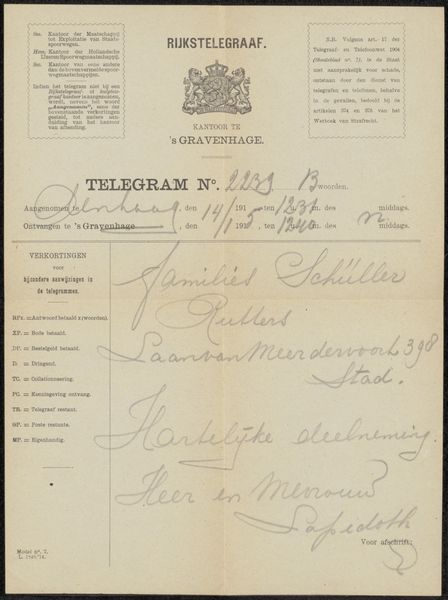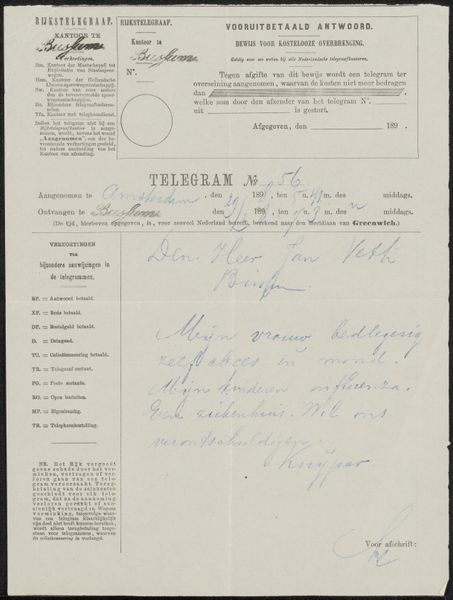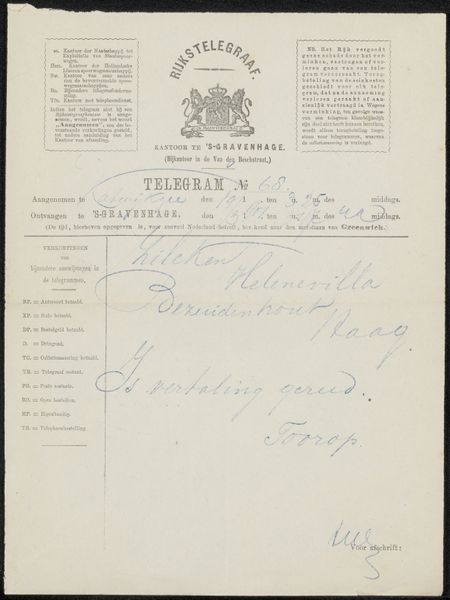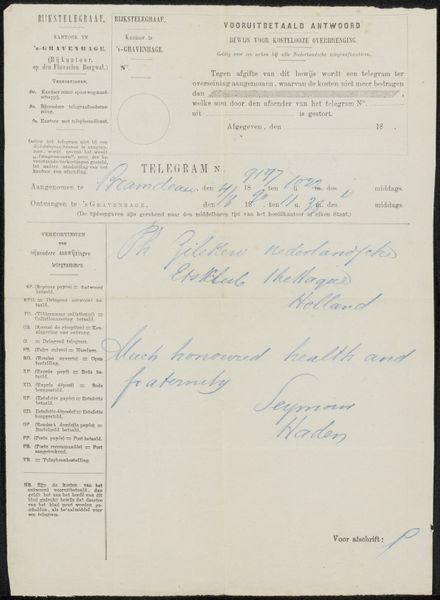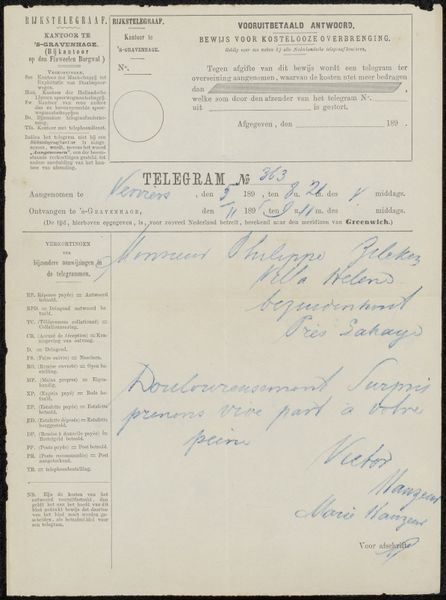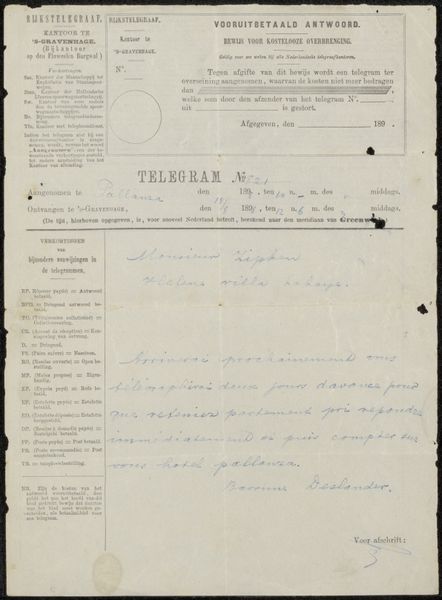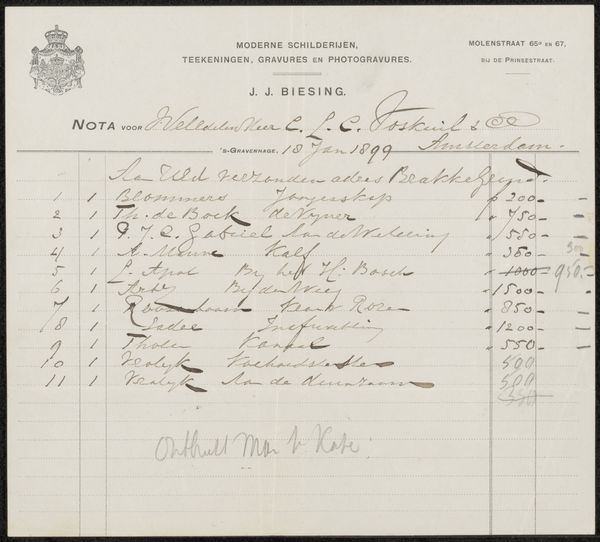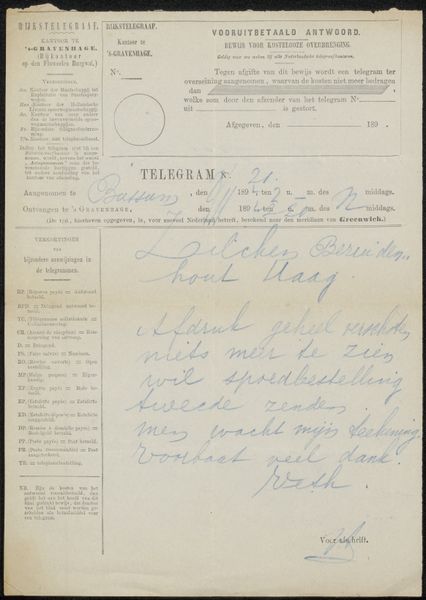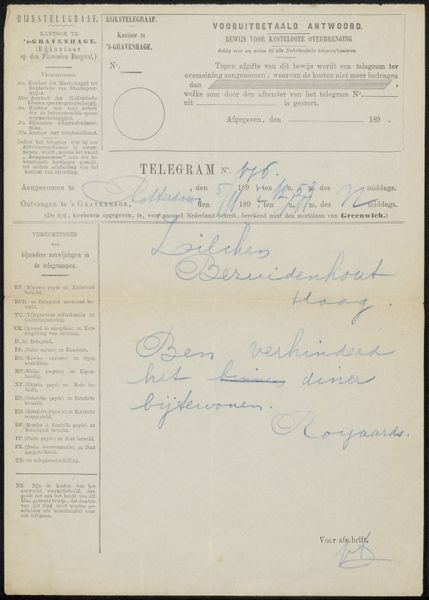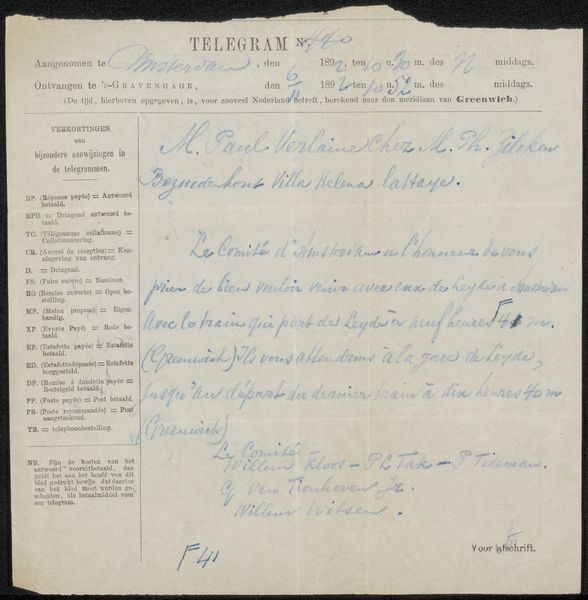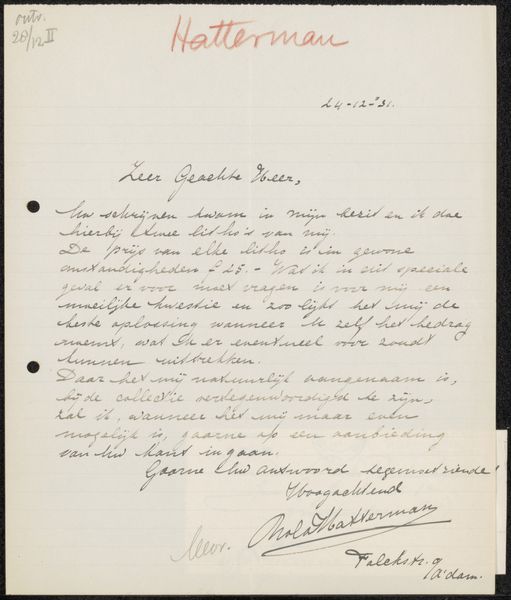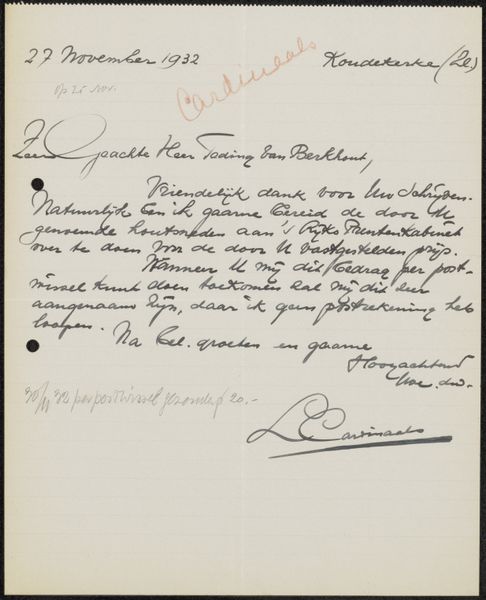
drawing, textile, ink, pen
#
drawing
#
textile
#
personal sketchbook
#
ink
#
pen work
#
pen
Copyright: Rijks Museum: Open Domain
Editor: This is “Telegram aan Philip Zilcken,” believed to be from sometime between 1900 and 1916, by Jan Veth. It's pen and ink on textile, housed at the Rijksmuseum. The handwritten note contrasts so sharply with the printed telegram form. It makes me wonder, what was so urgent that it needed to be sent this way? What stands out to you? Curator: To me, this seemingly simple telegram becomes a fascinating artifact loaded with social and cultural cues. Look at the very idea of a telegram; it speaks of urgency and the need for immediate communication, something that contrasts with our contemporary notions of constant availability. It signifies a specific time. Editor: I see what you mean! Before cell phones and email, a telegram was as fast as you could get. Curator: Precisely. But also notice how the formal printed text, complete with official seals and bureaucratic language, surrounds Veth's handwritten message. What feeling does the handwritten portion evoke? Editor: It feels personal and immediate, almost intimate. Curator: Indeed. It offers a glimpse into the relationship between Veth and Zilcken. Consider the language used - "Zeer gerleed, Vriendelyke aanrking." A sense of warmth, perhaps a bit of sadness, seems conveyed despite the telegraph's impersonal structure. It is the juxtaposition of form and feeling that reveals hidden emotional landscapes. The message regards four lithographies in Leiden. What can we assume about this connection? Editor: It implies they had a shared interest in art and printmaking. So the telegram carries not just information, but also a connection to shared values and artistic interests. Curator: Absolutely. The telegram transforms from a mere historical document to a container of social and personal memory, all told through combined textual and symbolic means. Editor: This close examination really transformed my understanding of this piece. I will keep my eye out for contrasts. Curator: Mine as well! This reminds us that the power of visual objects lies not just in their aesthetic qualities, but in their ability to unlock cultural narratives and personal connections.
Comments
No comments
Be the first to comment and join the conversation on the ultimate creative platform.
